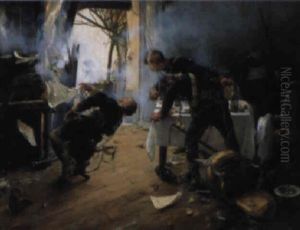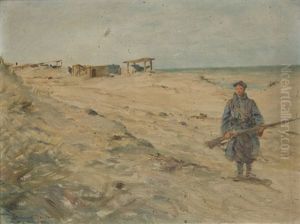Ernest Jean Delahaye Paintings
Ernest Jean Delahaye was a French painter associated with the Post-Impressionist movement, though not as widely known as some of his contemporaries. Born in 1857 in a small town in France, Delahaye developed an interest in art at a young age. He moved to Paris to pursue his passion and studied at the École des Beaux-Arts, where he was influenced by the academic teachings of the time.
Delahaye's early work reflected the academic style, but as he continued to develop his craft, he became increasingly interested in the innovative techniques of the Impressionists. He was particularly influenced by the works of Camille Pissarro and Edgar Degas. Delahaye began experimenting with light and color in his paintings, which started to exhibit the looser brushwork and vibrant palette characteristic of the Impressionist movement.
Despite his association with Post-Impressionism, Delahaye never achieved the same level of fame as artists like Vincent van Gogh or Paul Cézanne. He exhibited with other Post-Impressionist painters and participated in several exhibitions, including the Salon des Indépendants in Paris. Delahaye's subjects often included rural landscapes, city scenes, and still lifes, which he rendered with a delicate sense of composition and color harmony.
Throughout his career, Ernest Jean Delahaye remained dedicated to his art, though he struggled for recognition. His work was appreciated by a small circle of collectors and fellow artists, but it was not until after his death in 1930 that a broader audience began to acknowledge his contributions to the Post-Impressionist movement. Today, his paintings can be found in various art museums and private collections, offering a glimpse into the evolution of French painting at the turn of the 20th century.


























